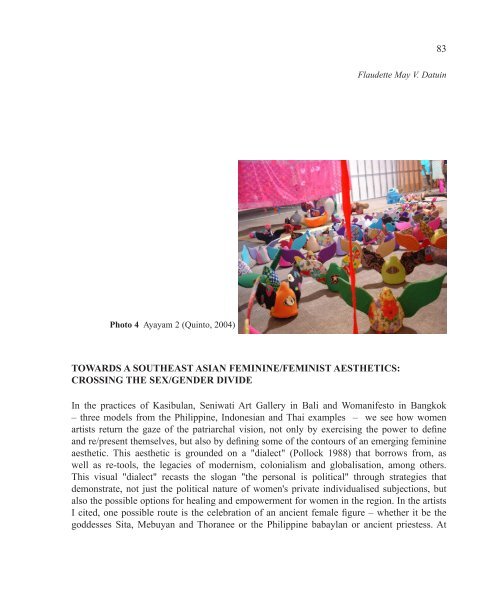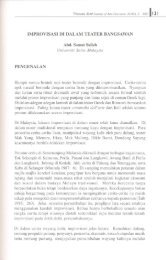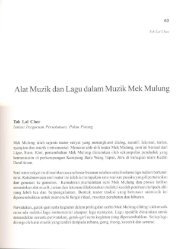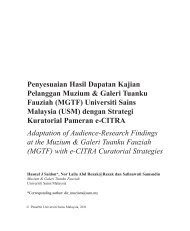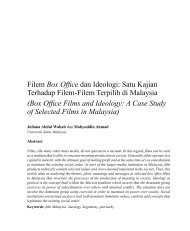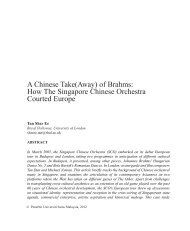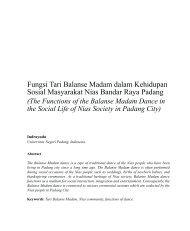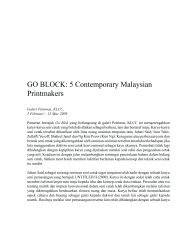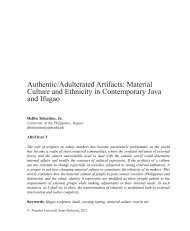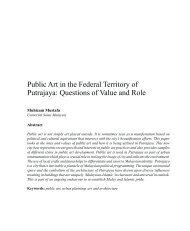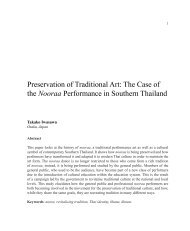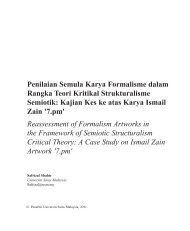Reclaiming The Healing Arts of The Ancient ... - Wacana Seni
Reclaiming The Healing Arts of The Ancient ... - Wacana Seni
Reclaiming The Healing Arts of The Ancient ... - Wacana Seni
Create successful ePaper yourself
Turn your PDF publications into a flip-book with our unique Google optimized e-Paper software.
83Flaudette May V. DatuinPhoto 4 Ayayam 2 (Quinto, 2004)TOWARDS A SOUTHEAST ASIAN FEMININE/FEMINIST AESTHETICS:CROSSING THE SEX/GENDER DIVIDEIn the practices <strong>of</strong> Kasibulan, <strong>Seni</strong>wati Art Gallery in Bali and Womanifesto in Bangkok– three models from the Philippine, Indonesian and Thai examples – we see how womenartists return the gaze <strong>of</strong> the patriarchal vision, not only by exercising the power to defineand re/present themselves, but also by defining some <strong>of</strong> the contours <strong>of</strong> an emerging feminineaesthetic. This aesthetic is grounded on a "dialect" (Pollock 1988) that borrows from, aswell as re-tools, the legacies <strong>of</strong> modernism, colonialism and globalisation, among others.This visual "dialect" recasts the slogan "the personal is political" through strategies thatdemonstrate, not just the political nature <strong>of</strong> women's private individualised subjections, butalso the possible options for healing and empowerment for women in the region. In the artistsI cited, one possible route is the celebration <strong>of</strong> an ancient female figure – whether it be thegoddesses Sita, Mebuyan and Thoranee or the Philippine babaylan or ancient priestess. At


